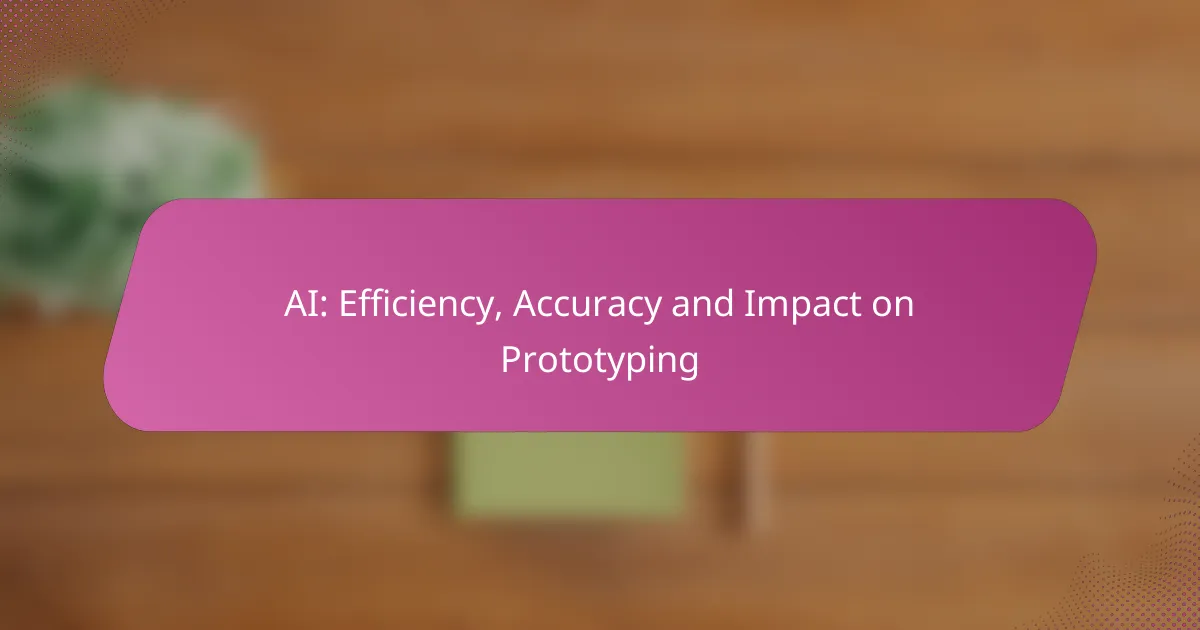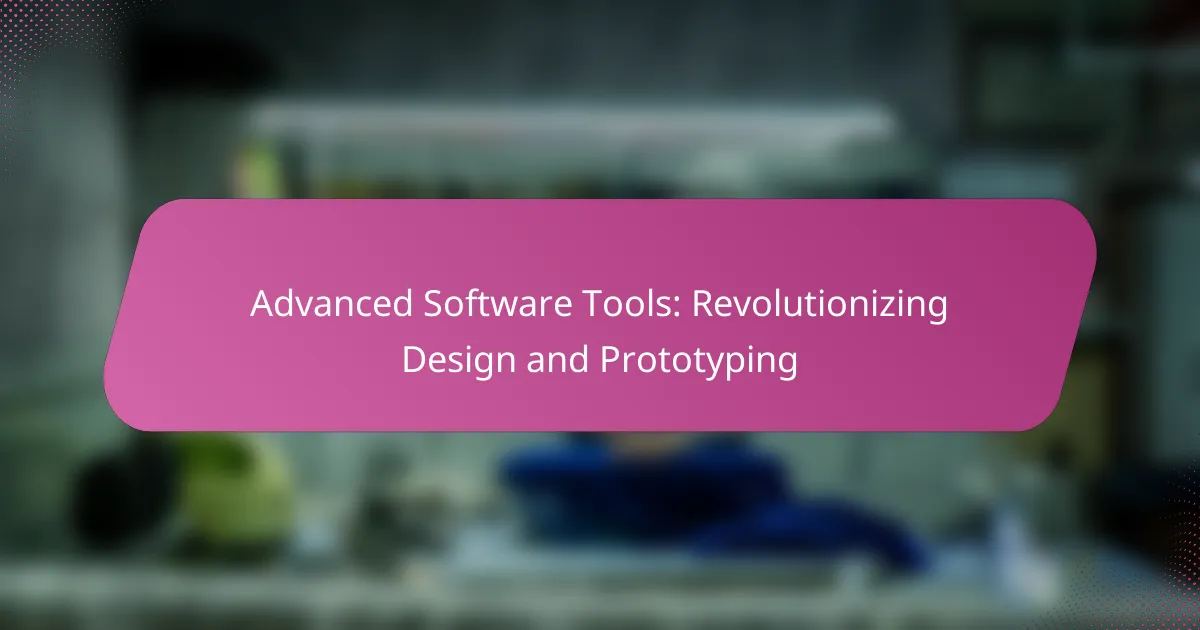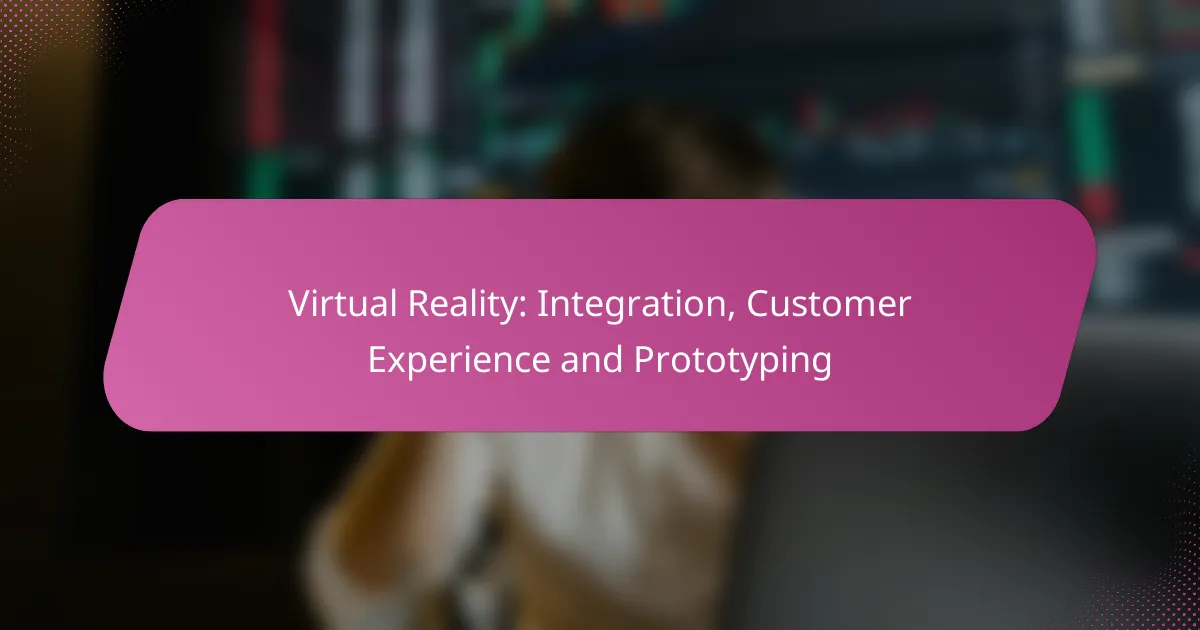Artificial Intelligence is revolutionizing the prototyping process by significantly enhancing efficiency and accuracy. By automating repetitive tasks and providing precise data analysis, AI allows teams to iterate designs more rapidly and collaborate effectively. This transformation not only reduces development time and resources but also leads to improved product outcomes and faster time-to-market.
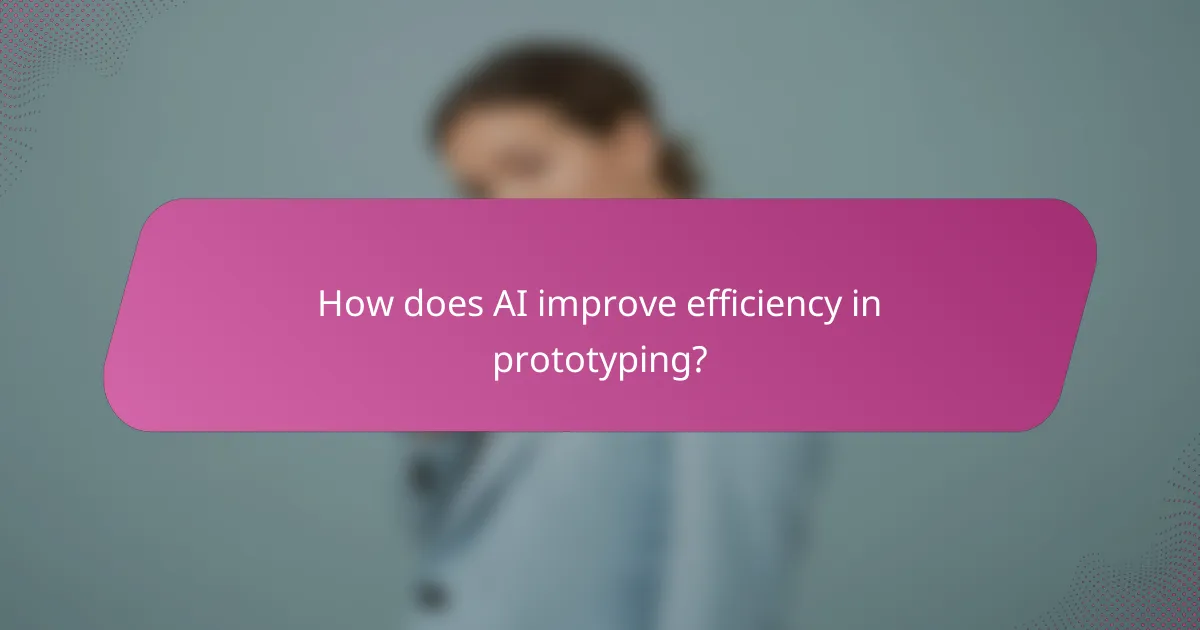
How does AI improve efficiency in prototyping?
AI enhances efficiency in prototyping by automating repetitive tasks, enabling faster design iterations, and facilitating better collaboration among teams. This leads to reduced time and resources spent on the development process, allowing for quicker product delivery.
Reduced time for design iterations
AI tools can analyze user feedback and design performance data to suggest improvements, significantly shortening the design iteration cycle. Instead of weeks, designers can receive actionable insights within days, allowing them to refine prototypes rapidly.
For example, generative design algorithms can produce multiple design variations based on specific parameters, enabling teams to explore options that may not have been considered otherwise. This capability can cut iteration time by up to 50% in some cases.
Automated testing processes
AI can automate testing by simulating user interactions and identifying potential issues before a prototype is even built. This proactive approach helps catch design flaws early, reducing the need for extensive manual testing later on.
Using AI-driven testing tools, teams can run thousands of tests in a fraction of the time it would take manually. This efficiency not only saves time but also enhances the accuracy of the testing process, leading to more reliable prototypes.
Streamlined collaboration tools
AI-powered collaboration tools facilitate real-time communication and project management among team members, regardless of their location. These tools can prioritize tasks, manage workflows, and even provide insights into team performance, ensuring everyone stays aligned.
For instance, platforms that integrate AI can automatically assign tasks based on team members’ strengths and availability, optimizing resource allocation. This leads to a more efficient prototyping process, as teams can focus on high-priority tasks without unnecessary delays.
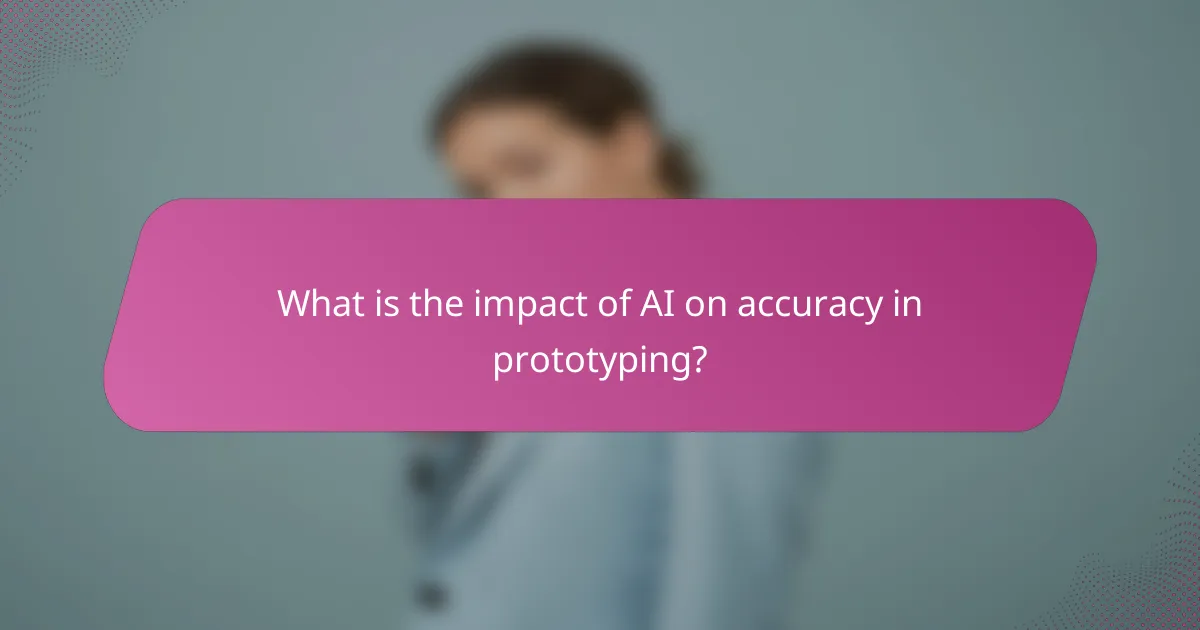
What is the impact of AI on accuracy in prototyping?
AI significantly enhances accuracy in prototyping by automating complex tasks and providing precise data analysis. This leads to improved design outcomes and reduced errors throughout the prototyping process.
Enhanced precision in design specifications
AI tools can analyze vast amounts of data to generate highly accurate design specifications. By utilizing algorithms, these tools can identify optimal design parameters that meet project requirements more effectively than traditional methods.
For instance, AI can assist in creating 3D models that adhere to exact dimensions and tolerances, minimizing the risk of discrepancies during production. This level of precision is crucial in industries such as aerospace and automotive, where even minor errors can have significant consequences.
Minimized human error
AI reduces human error by automating repetitive tasks and providing real-time feedback during the prototyping phase. This automation allows designers to focus on creative aspects while AI handles routine calculations and checks.
For example, AI-driven software can flag inconsistencies in design files before they reach the manufacturing stage, preventing costly mistakes. This proactive approach helps maintain high standards of accuracy throughout the prototyping process.
Data-driven decision making
AI enhances decision-making by leveraging data analytics to inform design choices. By analyzing past projects and current trends, AI can provide insights that guide designers toward more accurate and effective solutions.
Utilizing AI for data-driven decisions can lead to better resource allocation and improved project timelines. Companies can expect to see increased efficiency and accuracy in their prototypes, ultimately resulting in higher quality products that meet market demands.
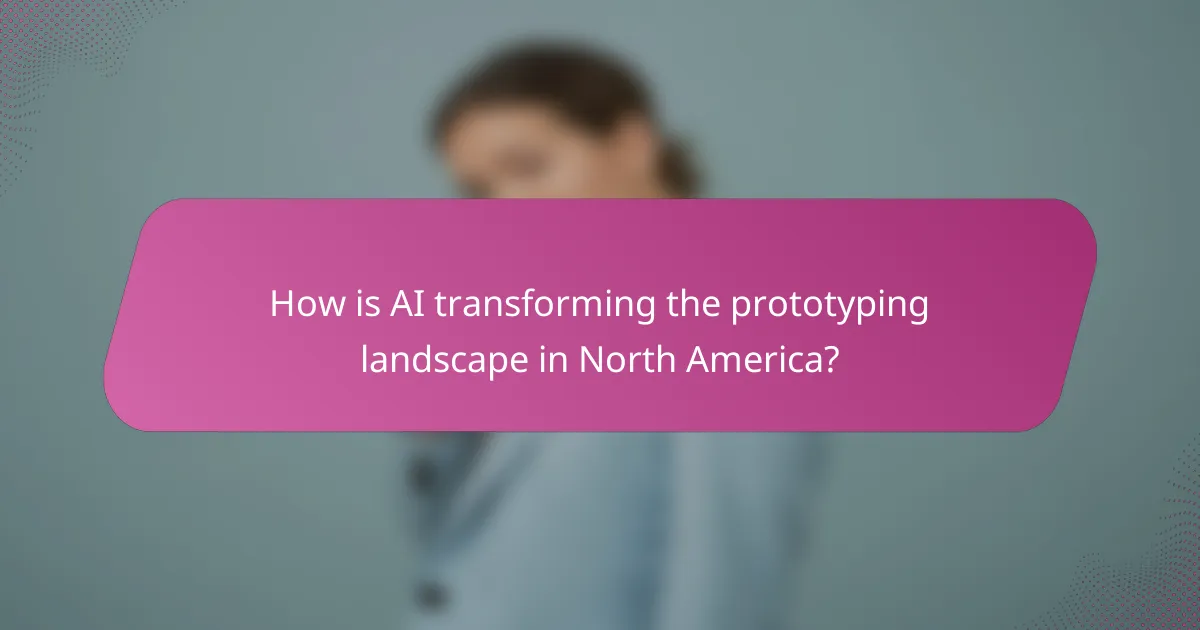
How is AI transforming the prototyping landscape in North America?
AI is significantly enhancing the prototyping landscape in North America by streamlining design processes, improving accuracy, and reducing time-to-market. Companies are leveraging AI technologies to create more efficient workflows, enabling rapid iterations and better product outcomes.
Adoption of AI tools by leading firms
Leading firms in North America are increasingly adopting AI tools to optimize their prototyping efforts. These tools can analyze vast amounts of data, automate repetitive tasks, and provide insights that inform design decisions. For instance, companies like Tesla and Boeing are using AI-driven simulations to refine their prototypes, resulting in faster development cycles.
As AI tools become more accessible, smaller firms are also beginning to integrate these technologies into their workflows. This democratization of AI allows a broader range of businesses to enhance their prototyping capabilities, fostering innovation across various industries.
Case studies of successful implementations
One notable case is General Motors, which implemented AI algorithms to predict potential design flaws during the prototyping phase. This proactive approach has led to a significant reduction in costly redesigns and improved overall product quality.
Another example is the fashion industry, where brands like Adidas utilize AI to analyze consumer trends and preferences. By incorporating AI into their prototyping processes, they can create designs that resonate with target audiences, leading to higher sales and customer satisfaction.
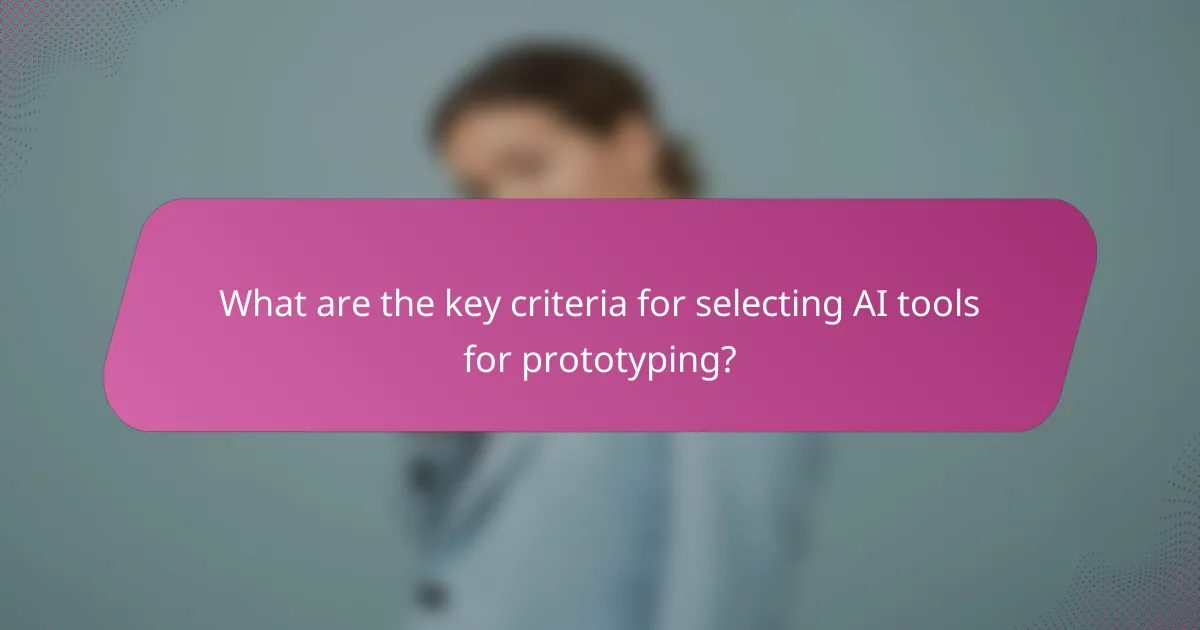
What are the key criteria for selecting AI tools for prototyping?
When selecting AI tools for prototyping, key criteria include integration capabilities with existing software and scalability for future projects. These factors ensure that the chosen tools enhance workflow efficiency and can adapt to evolving project needs.
Integration capabilities with existing software
Integration capabilities are crucial as they determine how well the AI tools can work with your current software stack. Look for tools that support popular platforms and APIs, allowing seamless data exchange and collaboration. For instance, an AI prototyping tool that integrates with design software like Figma or project management tools like Trello can significantly streamline your workflow.
Evaluate the ease of integration by checking for pre-built connectors or plugins. Tools that offer robust documentation and support for custom integrations can save time and reduce friction during implementation. Avoid tools that require extensive modifications to your existing systems, as this can lead to higher costs and longer deployment times.
Scalability for future projects
Scalability is essential for ensuring that the AI tools can grow with your organization and handle increasing project demands. Choose tools that can accommodate larger datasets and more complex prototypes without a significant drop in performance. This is particularly important if you anticipate expanding your team or project scope in the future.
Consider tools that offer tiered pricing models or flexible licensing options, allowing you to scale resources as needed. Additionally, look for features that support collaboration among multiple users, as this can enhance productivity and facilitate larger project teams. Avoid tools that may become obsolete or require a complete overhaul as your needs evolve.
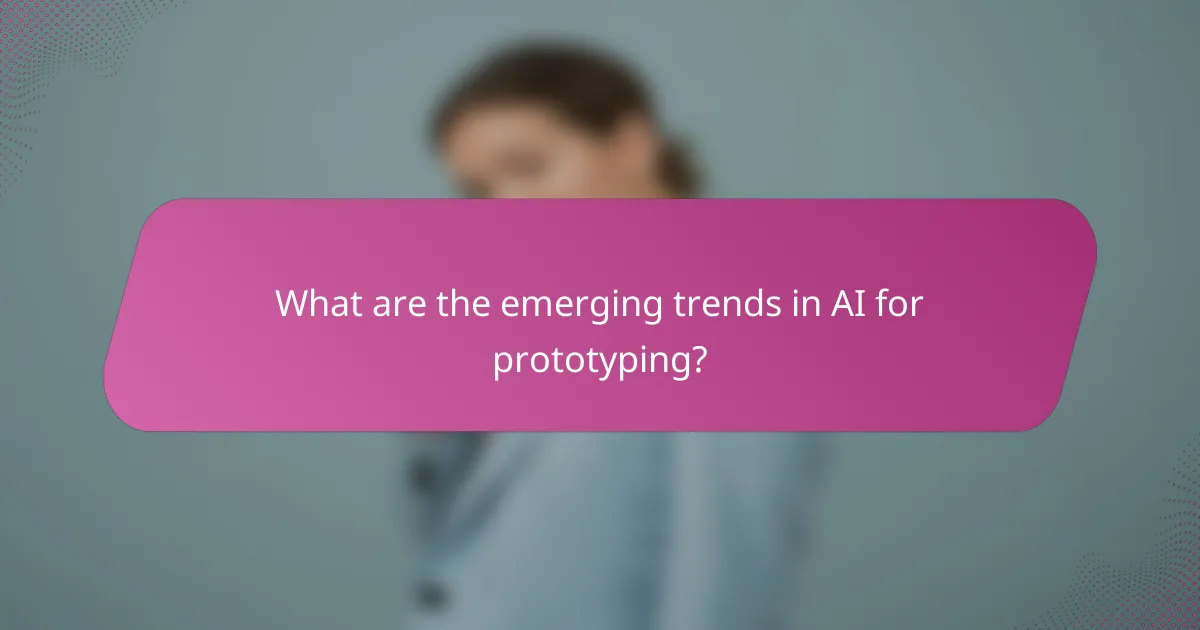
What are the emerging trends in AI for prototyping?
Emerging trends in AI for prototyping focus on enhancing design efficiency and accuracy through innovative technologies. Key developments include generative design and AI-driven user experience enhancements, which streamline the prototyping process and improve overall product quality.
Increased use of generative design
Generative design leverages AI algorithms to explore a multitude of design alternatives based on specified constraints and goals. This approach allows designers to quickly generate a wide range of options, optimizing for factors such as material usage, weight, and structural integrity.
For example, in the automotive industry, generative design can produce lightweight components that maintain strength, leading to improved fuel efficiency. Companies often find that using generative design can reduce prototyping time by up to 50% while enhancing innovation.
AI-driven user experience enhancements
AI-driven enhancements in user experience focus on tailoring products to meet user needs more effectively. By analyzing user data and behavior, AI can inform design decisions that lead to more intuitive interfaces and interactions.
For instance, AI can suggest design modifications based on user feedback, helping to create prototypes that resonate better with target audiences. This iterative process can significantly reduce the time spent on revisions and improve user satisfaction by ensuring that the final product aligns closely with user expectations.
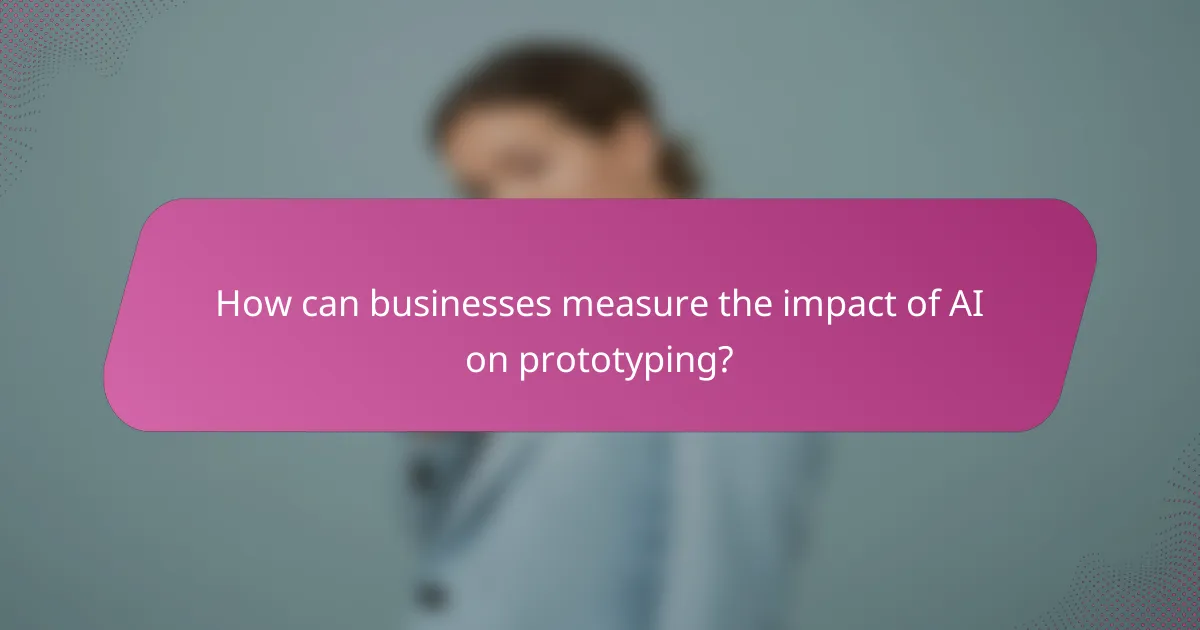
How can businesses measure the impact of AI on prototyping?
Businesses can measure the impact of AI on prototyping by evaluating efficiency, accuracy, and overall project outcomes. Key metrics include time savings, cost reductions, and improvements in design quality, which collectively indicate how AI enhances the prototyping process.
Key performance indicators for efficiency
To assess efficiency, businesses should focus on metrics such as time-to-market, resource utilization, and iteration speed. For instance, AI can significantly reduce the time required to develop prototypes, often cutting it down to a matter of days instead of weeks.
Another important indicator is the reduction in material waste. AI-driven simulations can optimize designs, leading to less material usage and lower costs. Tracking these metrics helps organizations understand the tangible benefits of AI integration.
Additionally, companies should consider user feedback and satisfaction rates as part of their efficiency metrics. Engaging stakeholders early and often can provide insights into how AI-enhanced prototypes meet user needs, ultimately influencing project success.
